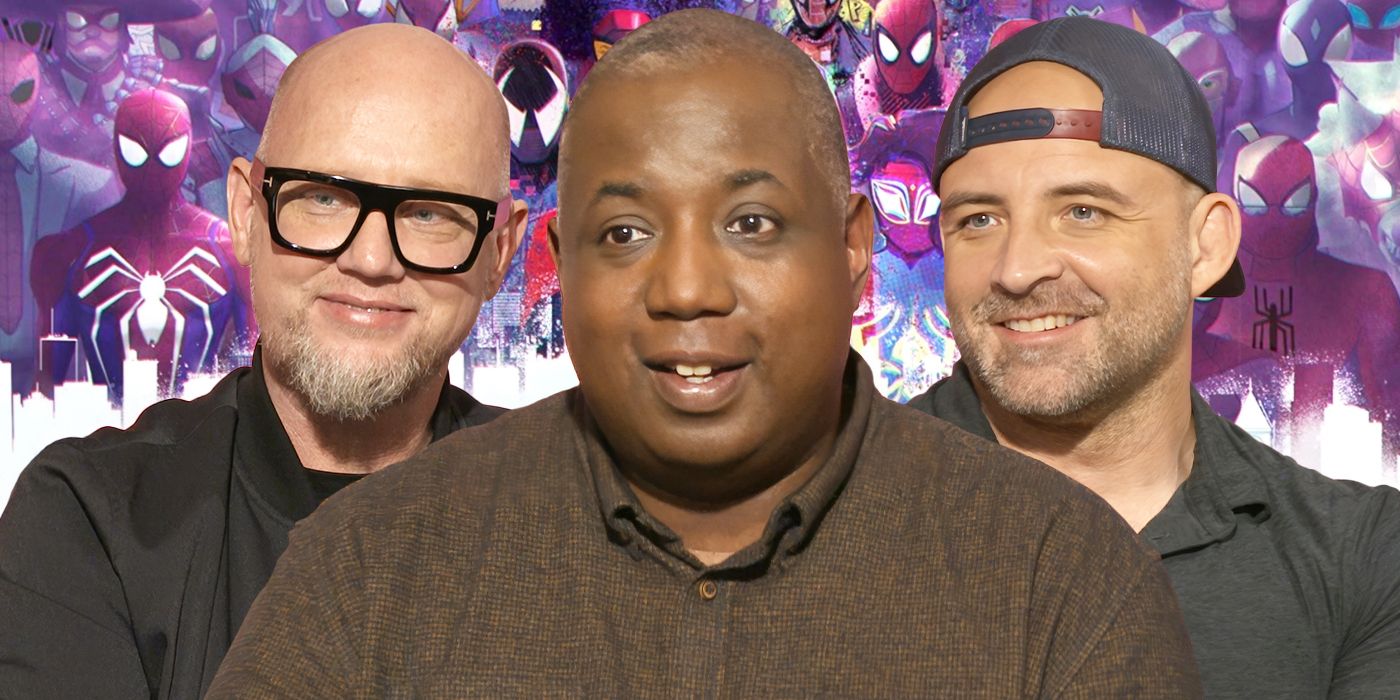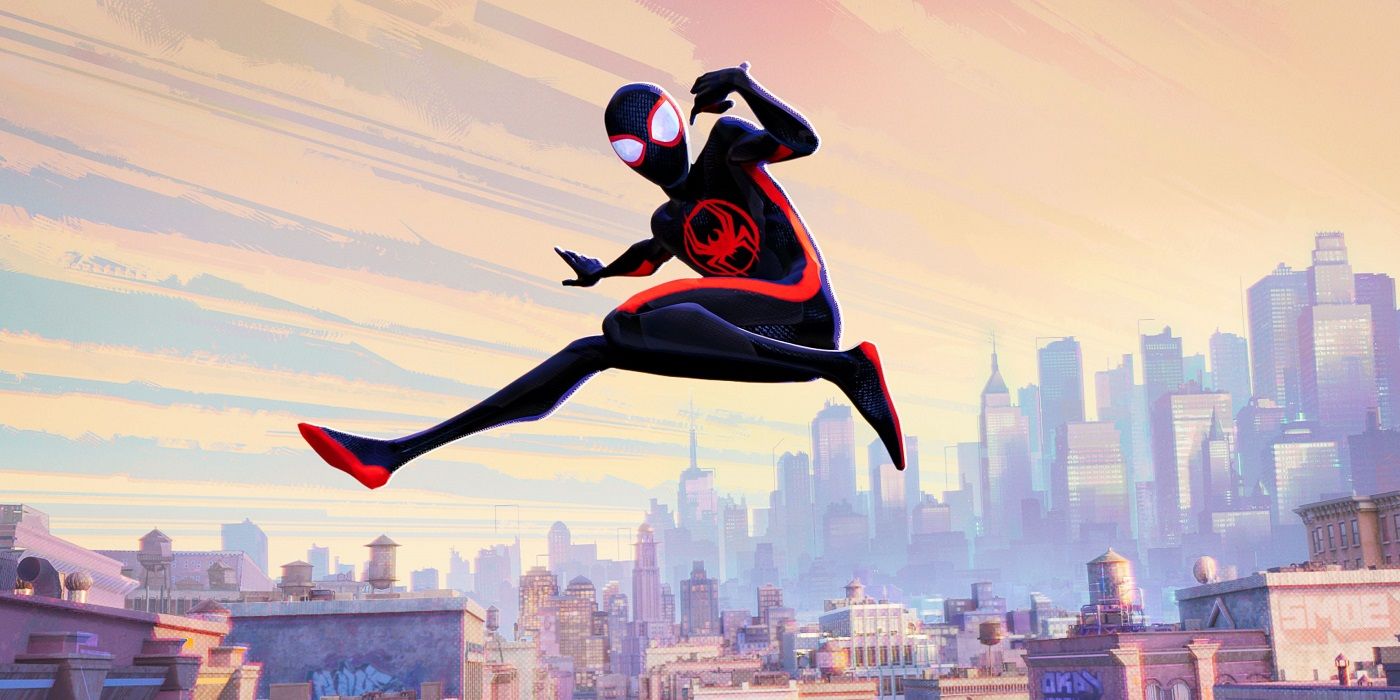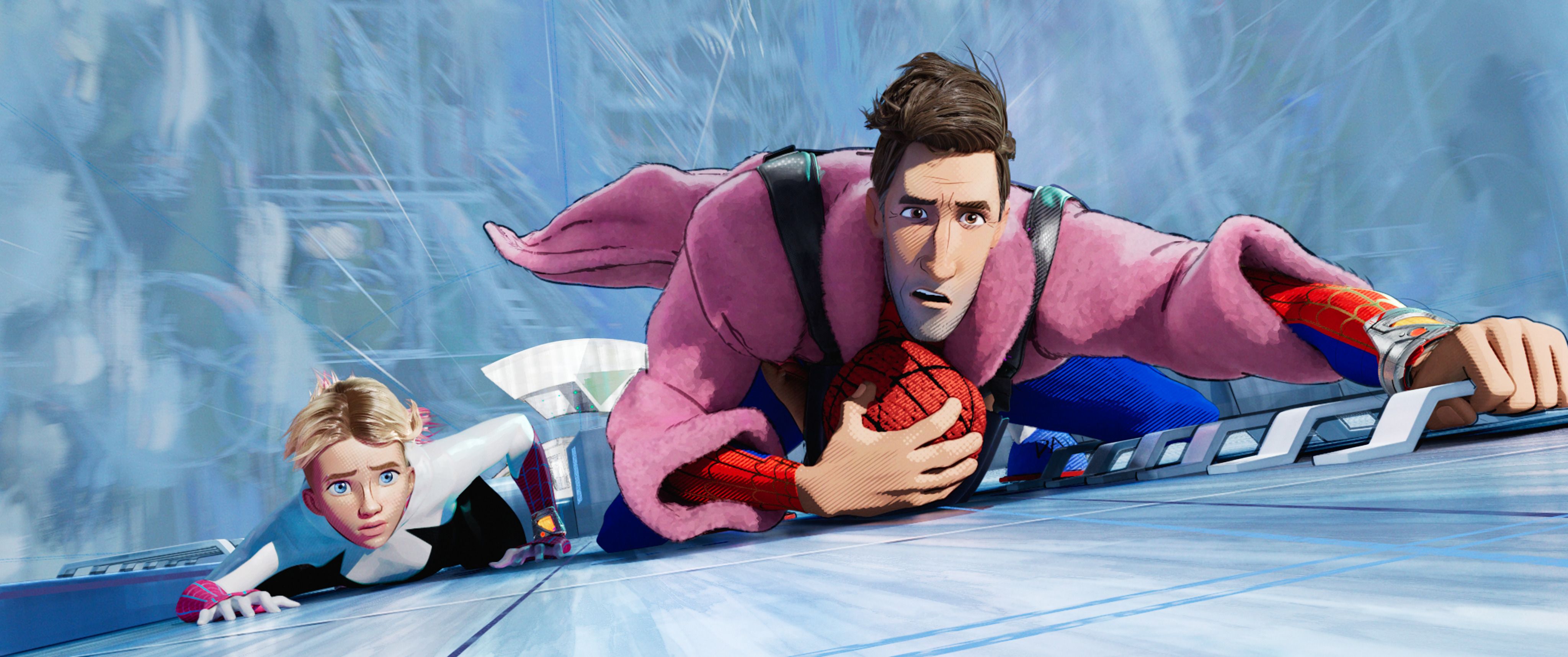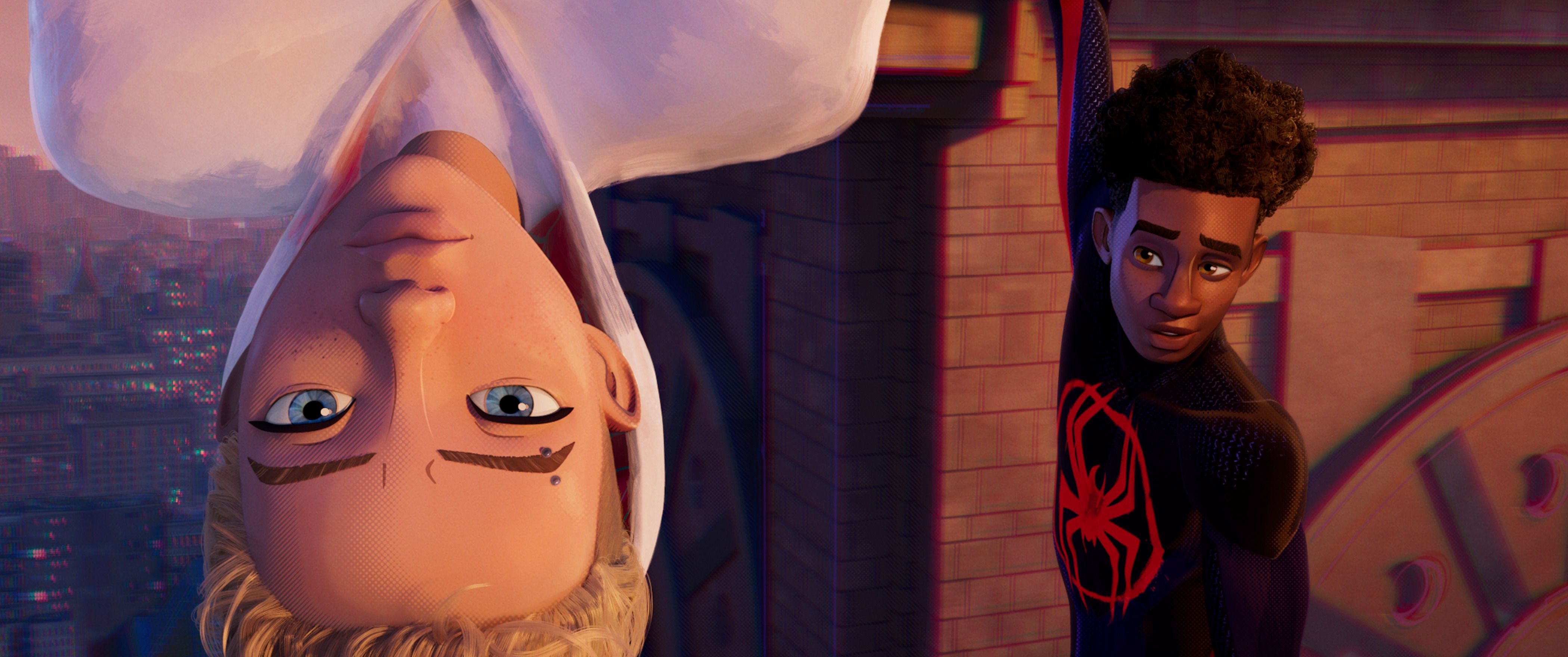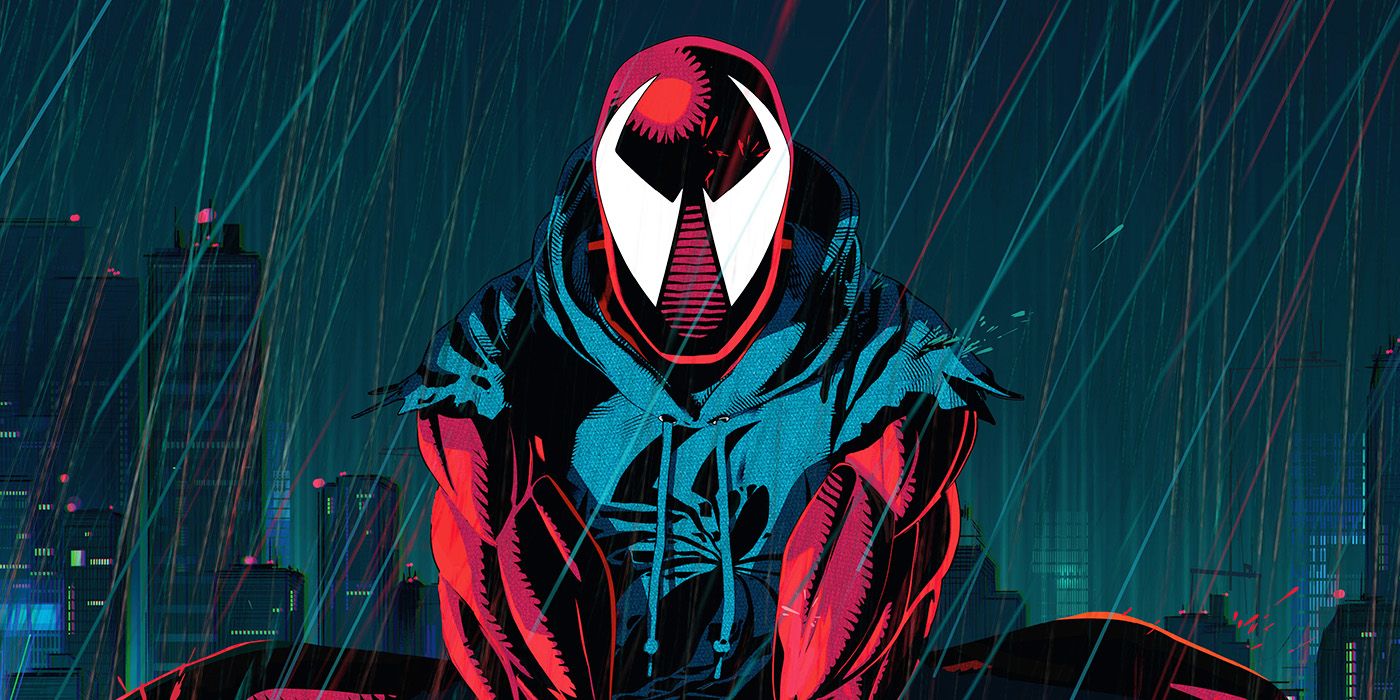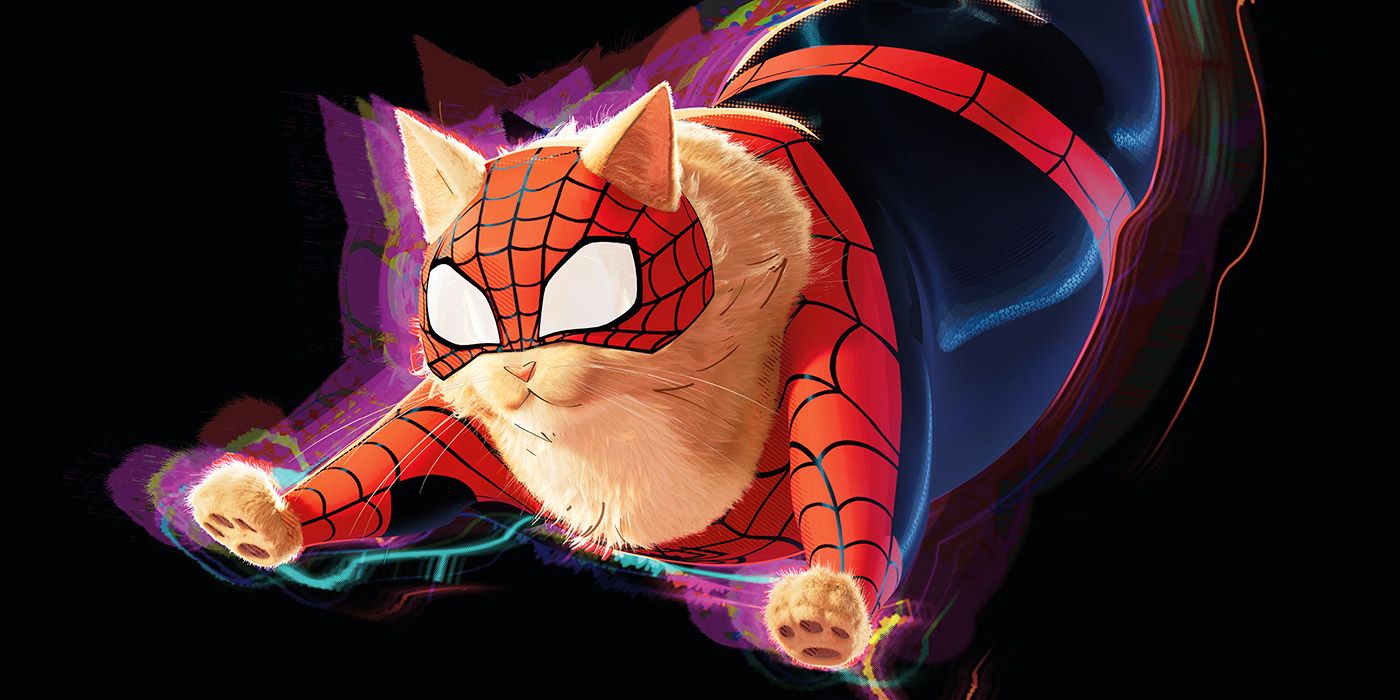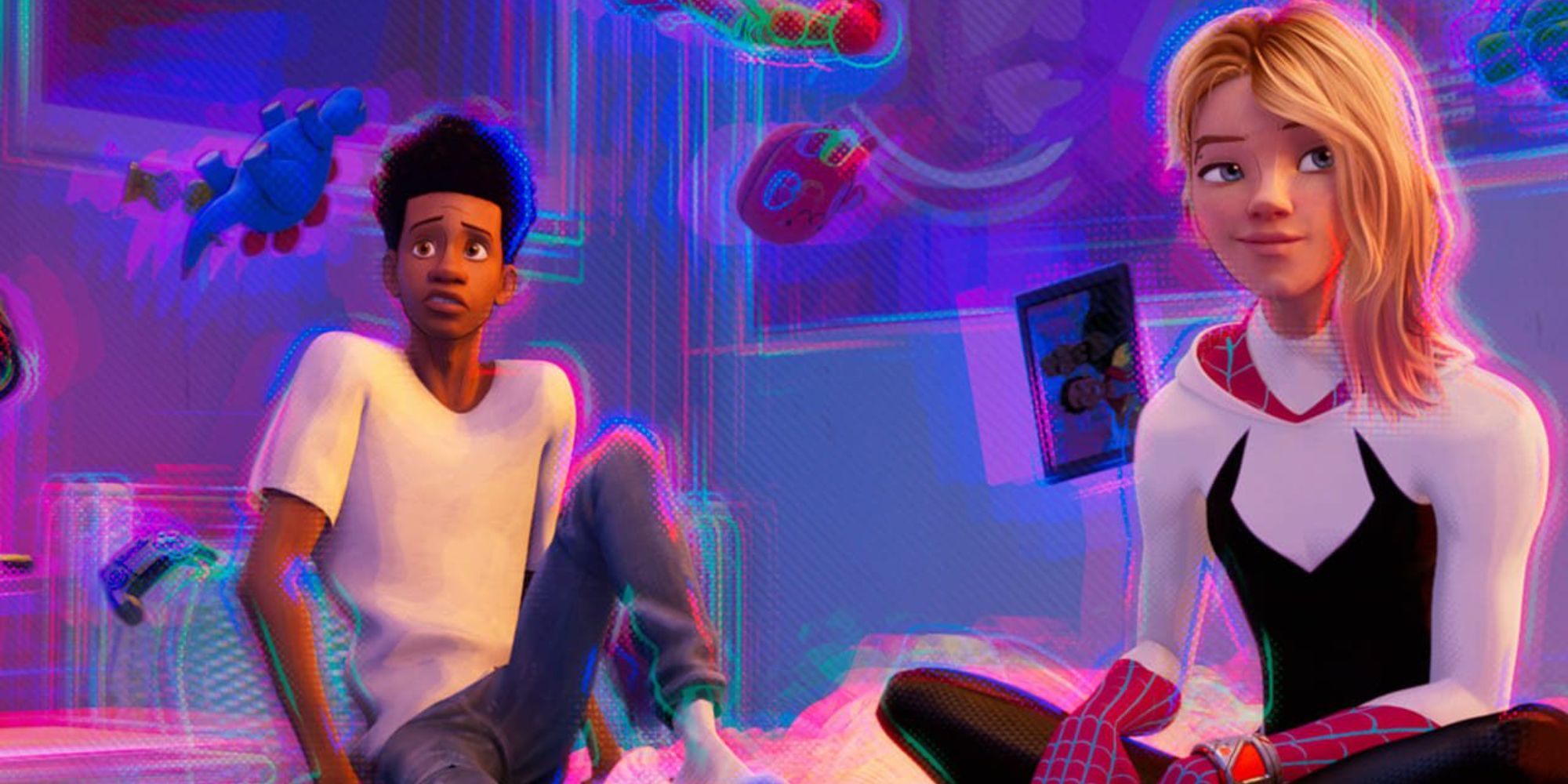Though Sony’s Spider-Man: Across the Spider-Verse is swinging into theaters on June 2, the directing trio still have their work cut out for them. Following the massive success of the first Oscar-winning film, Into the Spider-Verse, Kemp Powers, Justin K. Thompson, and Joaquim Dos Santos took the helm of what Thompson calls “the world's most expensive independent arthouse film” already equipped with the necessary skills to bring Miles Morales (Shameik Moore) and Gwen Stacy (Hailee Steinfeld) back in not one Multiverse-weaving sequel, but two. In their exclusive interview with Collider’s Steve Weintraub, the directors talk us through their unique and shared responsibilities, how they decided to break up cowriters Phil Lord and Chris Miller’s story with Beyond the Spider-Verse, and so much more.
Across the Spider-Verse begins “a year and a half later” after accepting the Spider-Man mantle, and Miles is now facing “more complex problems” as he juggles his life as Miles Morales and the responsibilities of Brooklyn’s Spider-Man. When Gwen Stacy returns to his dimension she takes Miles into the Spider-Verse, where Miguel O’Hara (Oscar Isaac) has formed a Spider Society tasked with protecting the Multiverse. On top of that, a bizarre new character has cropped up in Brooklyn, The Spot (Jason Schwartzman), and it just goes to show Spider-Man’s work is never done. The directors praise their enormous crew of animators who were constantly “experimenting and doing something new at all times” in order to bring this Spider-Verse to life. And with these hundreds of new characters comes a slew of new talent, like Academy Award-winner Daniel Kaluuya, Issa Rae, Andy Samberg, Karan Soni, and more.
In their interview, which you can watch or read below, Powers, Thompson, and Dos Santos answer all our questions about the shared responsibilities of three directors, how and why the story was split into two feature films, choosing the music, and how far along they are in recording for Beyond the Spider-Verse. Creating such “groundbreaking” story and visuals takes a super amount of talent and hard work, and they share some of those challenges, like last-minute changes to script, adding new Spider-People up to the very end, sneaking in Easter eggs, and how seemingly small moments, like Gwen’s hairstyle, can be costly.
COLLIDER: Let me start by saying, congratulations, you didn't not crash the Ferrari. So we're here to talk about Across the Spider-Verse, but I know you guys are knee-deep in Beyond the Spider-Verse, so I just have to ask you, for fans who are going to see this and be like, “Oh my God, there's another one,” where are you in the production process of that?
JOAQUIM DOS SANTOS: We are in the process of being so thankful that we survived making this one, that's where we're at.
JUSTIN THOMPSON: Good answer!
KEMP POWERS: Yeah, that's really the best answer, I think, for that. I mean, obviously, when we conceptualized it, we broke the story for both of these films, but obviously, this came down to the wire, and I think the immediate priority is to get a little bit of a break for folks. But know that, very much, this is part two of a three-part series that was decided before this was even made, and there will be a third part. That's pretty much all we can really say.
So this movie is about two hours and 20 minutes, and I'm just curious, did at any point the studio say, we would rather have it closer to two hours. How did you guys decide on being able to tell a story in a longer format?
POWERS: Obviously, you're always gonna get encouraged to trim and tighten, and make it as tight as humanly possible, which no one wants to do that more than us, but at the end of the day, it's, “Is the audience engaged?” We don't think that there's any fat in this film, to be honest… We started screening it for test audiences and we figured out the final things that we cut, and we finally screened a version that the audience not only enjoyed, but they didn't feel like it was running too long. So, we remind people that this is meant to be a film. Animation is a medium that we work in, but we treat it like like any other film that any of us would be making. Again, there's a story we're trying to tell, and we need to make sure we give ourselves enough time to tell it. Hopefully people will be engaged enough that time is not an issue that they think about during it.
First of all, this movie could have been three hours and I would have been sitting there and taking it all in. I think a lot of audiences may not associate animation with—
POWERS: Well no, a good point is, Into the Spider-Verse was almost two hours long, which at a time when people were like, “Animated films are supposed to be 80, 85, 88 minutes,” they came out with the first one and it was almost two hours, and no one really noticed. So I think that kind of established the template that you take the time you need to take to tell the story that you need to tell.
THOMPSON: Let me just say, the first movie was so groundbreaking storytelling-wise, and visually, and it took you on this journey with this kid, Miles Morales, who we fell in love with, and he was at an early part of his development as a hero, but he was a kid, and he was 13. We’re meeting him in this film a year and a half later, and he's 15 years old. He's dealing with much more complex problems, and the complexity, to do that justice, we needed time to tell that story, and we wanted to set up the right pacing for that, so we could have enough time for our lows and our highs in this film. And without those lows, without those really strong emotional beats, none of the crashing and bashing, none of the spectacular visuals and stuff that we set out to make in this movie would really matter. So for us, I don't think length was really much of our primary concern at all.
What was our primary concern is, did we care about what was going on? Did we actually want Miles to succeed? Did we actually feel that tug of Rio and Miles, like Rio's heart breaking as she says goodbye to Miles, and gives him permission to leave the nest essentially. As parents – we're all parents – I think the heart of this emotional story as parents, we've all been in those places with our own children where you're trying to hold on to them and you have to let them grow up, and it's the most painful thing that I've ever been through, and trying to capture that.
DOS SANTOS: It’s letting those moments play themselves out naturally versus fit into whatever our running time is. I think that's what you want, the naturalism to really shine through in those.
We're on the same page. The character moments are what everyone loves about these movies. It's not the way Spider-Man fights in a scene, it's the characters. So, it's very unusual to have three directors on a project, and I'm just curious, did you guys sort of have of your own speciality in the directing? Could you sort of take me through how there's three directors on this?
DOS SANTOS: Well, I think the first one set the pace, there were three directors on the first one. It's a big film, this is a bigger film. Yeah, we all do have our specialties. I started in the industry as a story artist, so a lot of my storytelling skill is through visuals, it's through camera work, it's through compositions, and taking what's written and translating that and disseminating that to a crew that's gonna add to what the script is already doing so well.
THOMPSON: I was a production designer on the first film, obviously that's my background, but ultimately, I think the three of us, we all bring our unique experiences. This movie is too big, honestly. It is like making five movies at once. There's no way we could possibly be in every place we need to be, logistically speaking, and make this movie as if there was just one director. And then I think, also, the level of expectation, not just based on the first film, but the fans themselves, the fans of Spider-Man own that character. That character is so beloved and needs so much brought to the screen to bring it to life in the right way that it does take three brilliant minds like ours [laughs] to actually make it all come together in the way that it needed to.
So, I mean, yeah, my background as a visual designer and a production designer, obviously it's going to have a direct influence on our ability to take story and translate those internal ideas into something external.
POWERS: With my background, it's been a combination of things. I love working with the actors, so actually directing the vocal performances was something that I really took a lot of joy in, and spending a lot of time in edit and cutting it all together. I mean, the way it worked functionally was, in the beginning, it was all of us doing everything. So every single meeting, we were, all three of us, kind of coming to a quorum in the meeting. Then you get to a certain point in the production and we kind of split up into three silos.
DOS SANTOS: That first part allowed us to, like– It was sort of boot camp.
POWERS: Yes, for us to all kind of get on the same page.
THOMPSON: And we came up with all the ideas together, and I think we all wanted to make the same movie from the beginning.
POWERS: Exactly, exactly. Then we kind of split up into our specialty silos to execute those ideas. So that's me going off and doing recording sessions with the cast, and then sitting in edit with Mike Andrews and Phil [Lord], and cutting it together, Justin going more into the visual, Joaquim– you know, we just conceptualized, worked on it together, and then kind of split up in order to actually execute it. And then we made sure we checked in. So every week it's like you get to see what the other person's doing and give your notes, and give your input on that. And that's really– I mean, it's kind of a miracle that we got the movie done, considering how much we had to tackle in such a short period of time.
Because you knew that this was a two-part movie, when you were doing vocal recording with the actors, or you're working on this whole thing, were you working on both parts at the same time, or is it one of these things where, like, all the vocal stuff is done for both movies?
POWERS: No. Some of it is, we have some vocal stuff done for the second film, but no, not all of it's done for both movies. They're all gonna be coming back [laughs].
DOS SANTOS: And look, these things, they evolve over time. It's not exactly to the letter of the law with what's on the script of what ends up on screen, it evolves. So that'll continue to happen through the next film as well, you know? Changes will come at the last minute, you'll screen it and you'll get reactions that will cause you to pivot.
POWERS: And honestly, people's reactions to this film are gonna influence and impact what happens with that next film.
THOMPSON: Absolutely.
So behind you we can see some of the Spider-characters. There are a few scenes in this movie where there are an ungodly amount of Spider-characters. Do you actually know how many Spider-People, if you will, are in the movie, like the final number?
THOMPSON: The exact number? Oh boy, we kept adding, like all the way up until the very end. Honestly, I'm gonna be level with you, we just finished the film, like in the last like two weeks, and I don't think I've had time to pause and actually take a final count. But I think it was about 280 the last time I looked in. Just to be clear, that doesn't mean specific, unique characters that you might recognize, it might mean variations as well. But if you're just talking about named characters, then I think there's probably about 95.
When I was watching this movie, I wanted to push pause about 1000 times, and I will do that when it's eventually on home video, but have any of you actually pushed pause on every frame? Because I would imagine some of the animators are going to sneak through some things, maybe?
DOS SANTOS: I'm sure it's happened, but I will say this, we had a different experience, and we've talked about this a little earlier. We came into screening rooms assuming that we were looking at key art or paintings, and we sat down, we were like, “This looks great,” and then they hit play, and it started moving. We were like, “What is happening right now?” You know, it sort of shifted our entire paradigm. So, yeah, I think that's gonna be one of the treats of this film is that you'll want to go back and watch it again and again because there is so much to discover.
POWERS: Yeah, no matter how many times we pause, you can't catch it all. We actually have been, in the past week, just now taking stock of the Easter eggs. This week has been the first time people are actually in a room going through every single Easter egg to figure out everything that's actually in the film.
DOS SANTOS: That’s where you’ll get your final tally of all the characters.
THOMPSON: I think part of the reason why is because all these different departments are working at the same time, and each department is getting their own Easter eggs in. For example, one of my favorite Easter eggs to track is how many times our head of character animation, Alan Hawkins, makes an appearance in the film.
POWERS: Isn’t he on money?
THOMPSON: He’s on money! His animation crew, their love for him, and just using him as a gag in the background, and there's actually a little story journey that they created for Alan Hawkins.
DOS SANTOS: He became everybody's icon. At some point, everybody logged on to one of the sessions–
POWERS: And it was all Alan.
DOS SANTOS: –it was just different faces that Alan makes.
THOMPSON: And so there's actually this whole like journey that I expect to see fully developed on the internet at some point just tracking Alan through the movie.
This is something I'm already looking forward to. What day of the production did someone want to rage-quit when you said, “We're going to animate this, and now we're gonna add water and rain?”
THOMPSON: Oh, not at all.
I'm joking, I'm joking.
THOMPSON: Actually, I think you couldn't get me to rage-quit this movie if you tried. And in fact, many people might have expected me to many times, but I think that the idea of being given an opportunity to work on the world's most expensive independent arthouse film is probably like a dream come true as an artist, and being able to express ourselves as fully with a crew of almost 1000 people working for what amounts to 735 years of work, quite literally. And how dedicated and committed they were to that, this just experimenting and doing something new at all times, you couldn't pull me away from that. While also, all of that being supported by the gravitas and the weight of this incredible, emotional journey – you couldn't pull me away from that.
Yeah, it was more like an animator, because you're pushing the technology hard to deliver this film.
DOS SANTOS: I mean, we were joking that there's small things that you don't take into account, that maybe didn't happen on the first film that happened on this one. Gwen putting her hair up in a bun, that's an expensive decision. You gotta lean in and go, “Yeah, no, it's what's right for the character. It's what's right for the moment. It'll add naturalism,” and then you got people that are literally going, like, “That's gonna cost us this amount of money.”
POWERS: Removing a mask, pulling off a mask is one of the big things. That’s a big gesture in animation, is the Spider-People pulling their masks off.
DOS SANTOS: Slowly, so that you see it tugging on the skin.
THOMPSON: To your specific point, though, I see what you're asking. Actually, no, our crew didn't want to leave the movie. Actually, I literally got a letter from them a couple of days ago [saying] how much they wish they could keep working on this because it was so inspiring to them. That almost moved me to tears to read because we did ask so much of them, but they were so committed the whole time. These movies, having worked on the first movie as a production designer, and now as a director on this with these guys, these movies are an opportunity you rarely get anywhere in your career. To do something where we give people permission, we're giving permission to ourselves and the support of the studio behind that, to experiment and to do things nobody's tried before it. You don't realize, the crew made this movie, they own this movie as much as any of us.
DOS SANTOS: Yeah, we're lucky we get to be up here and do the thing, but it's their passion.
And also, just from the first few frames when you see logos and it's already doing cool stuff, I'm like, “Oh my God.” I was so happy because it pulls you right in.
POWERS: You can’t even get through the Sony logo without going like, “Oh wow, look at that!” [Laughs]
I definitely have to ask you about music because the first film soundtrack, people love it. And I'm just curious, what it was like with the sequels and figuring out what songs you want to put in. Because I would imagine there are a lot of artists who are like, “I wanna be in this movie.”
POWERS: Yeah, it was a two-part– Well, the bigger challenge is what we're gonna use, music versus score, because we have just a wealth of so many riches in that we have Daniel Pemberton who came back for the score, as well as Metro Boomin, who was executive producing the soundtrack, and then a few needle drop songs of our own choices to throw in there. So, for a lot of the production of the film, we're using temp music, and we're deciding throughout the process what works better in this moment, temp or score, temp or score. And, Metro being probably one of the most amazing producers in the world today, he's the one who went out and found the artists that he wanted to bring on to a lot of these tracks. What I love about what Metro does is that, he speaks to the past, the present, and what's coming in the future, and I think that's reflected.
James Blake is one of my favorite artists, and to hear a James Blake song/Metro song is amazing to me. We also get Rakim in there, and then Daniel Pemberton does some things with the score. He had already done such an amazing score with the first film, but he did such an amazing evolution, I think, of the score that from the opening, those opening credits you talk about where the logos are coming up, and the score just says to you, like, “Okay, this is something different.” A lot of it was trial and error, to be honest. That's the wonderful thing about animation, it's an iterative process. So we got to drop in different kinds of music in different moments of the film and see what was the most effective, what had the most impact emotionally on the audience, and it's a equalizing thing you do until the very end.
Spider-Man: Across the Spider-Verse is in theaters June 2. Check out our interview with writers Phil Lord and Chris Miller below.

